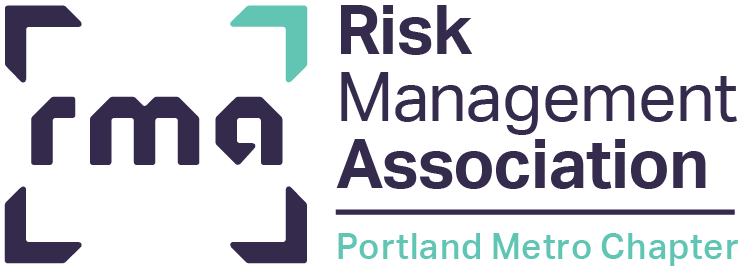You’ve worked hard to land that new customer. They want a new line of credit and you want to give it to them. Of course, you will need financial statements for underwriting but which ones?
Audits are the ‘gold standard’ but they are the most expensive for your customer. Maybe you should ask for a review or maybe a compilation this year. But what are you giving up by not requiring an audit or settling for a compilation instead of a review? Let’s look at the differences. After comparing them we’ll take a look at how the costs compare.
Audits –the highest level of assurance that a CPA expresses. The CPA performs procedures in order to provide a high but not absolute level of assurance about whether the financial statements are ‘free from material misstatement’. In an audit, the CPA obtains an understanding of the internal controls and assesses the risk to fraud. The CPA will also confirm accounts receivable, observe the physical inventory count and perform other procedures. A CPA cannot perform an audit if they are not independent of the client. The CPA will issue a formal report that expresses an opinion on whether the financial statements have been presented fairly, in all material respects, and in accordance with the chosen reporting framework (usually GAAP but sometimes cash, tax or other bases). The CPA will also issue a report of any significant or material weaknesses in the customer’s system of internal controls that are identified during the audit.
If audited financial statements are asking for too much relative to the credit risk maybe a review will work.
Reviews – consist of analytical procedures and inquiries regarding the customer’s financial information. A review does not include observing physical inventories, confirming accounts receivable or gaining an understanding of the company’s internal controls or fraud risk. Nor does it include a separate letter of material weaknesses. A review does not entail gathering any evidence from outside of the company to corroborate the customer’s financial data. The CPA will gather industry information to help him understand the industry that the company operates in. The CPA will issue a formal report that includes a ‘conclusion’ as to whether any material modifications he becomes aware of during the review for the financials to be fairly presented. The CPA’s review report includes ‘negative assurance’ (that is nothing came to his attention) as compared to the auditor’s ‘positive assurance’. As with audits, the CPA must be independent of the company when performing a review.
Reviews are definitely less work for the CPA and less intrusive on the customer, but a review can still require a lot of time preparing analyses and answering questions. Reviewed financial statements may be too much of a time burden and cost on your new customer. Maybe ‘compiled’ financial statements will get the ball rolling with your new client.
Compilations – the CPA offers no assurances or conclusions regarding the customer’s financial statements. However, the involvement of the CPA can often start the conversation with the company regarding the quality of their financial reporting. For example, the company may be using accelerated depreciation on their internally prepared financial statements because that is what their tax preparer provided. Accelerating depreciation can reduce profits and equity which does not help with the underwriter’s credit evaluation. A CPA may become aware of these potential errors in conversation with the customer and by reading the financial statements. Unlike audits and reviews, the CPA does not have to independent of the company when performing a compilation, but he does have to disclose his lack of independence. Unlike with audits and reviews, compiled financials do not need to be accompanied by footnotes (a valuable source of information).
What if these service levels still don’t work for you and your customer? Consider a combination of services from the CPA. For example, compiled financial statements with footnotes may be a good starting point but you want some comfort around the customer’s inventory. The CPA can perform ‘agreed-upon procedures’ (AUP) for inventory that is tailored to meet your needs (e.g.; observe the counts, test the costing, test for obsolescence). The cost and intrusion on your customer from this combination may be less than a review and provide you with the needed information.
Cost comparison – As a rule of thumb each increase in service level doubles the cost. For example, a compilation might cost $6,000 without footnotes and $10,000 with. A review of those same financial statements could cost $20,000 and an audit closer to $40,000. Costs will vary depending on the complexity of the company’s financial statements and the customer’s sophistication, the number of adjusting entries, etc.
Need more information? Take a CPA to lunch or refer to this publication from the American Institute of CPAs. https://www.aicpa.org/interestareas/privatecompaniespracticesection/qualityservicesdelivery/keepingup/what-is-the-difference-between-compilation-review-audit.html
About David Porter:
Responsiveness, creativity, and client focus: these aspirations have guided Dave Porter over the course of his career. After 15 years in public accounting with a Big 4 firm, Dave started and led two successful consulting firms over the next 14 years before coming aboard. “Running your own business is an eye opener. The experience has shaped the way I serve clients today. There’s no better way to learn about a company’s issues than by sitting down with the owners, especially when you’re a business owner yourself.”
Dave also helps companies develop stronger internal controls to help prevent and mitigate risks associated with occupational fraud and assist the victims of fraud recover. “Business owners are focused on running their companies, and may not stop to consider that a trusted employee might be stealing from them.” This need led Dave to launch Geffen Mesher’s Forensic Accounting group. Under his leadership, the group has quickly become a well-rounded and sought after forensic team.
When he’s not sitting down with business owners, Dave likes to hit the open road on his motorcycle, packing everything from hiking boots to his nine-iron. “The typical ways people like to relax in the Northwest.”
